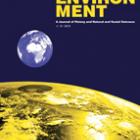Vadas, András, and Lajos Rácz. “Climatic Changes in the Carpathian Basin during the Middle Ages. The State of Research.” Global Environment 12 (2013): 198–227. Republished by the Environment & Society Portal, Multimedia Library. http://www.environmentandsociety.org/node/7594.
The aim of the paper is to present a summary of the current scholarship on the climate of the Carpathian Basin in the Middle Ages. It draws on the results of three substantially differing branches of science: Natural sciences, archaeology and history are all taken into consideration. Based on the most important results of the recent decades different climatic periods can be identified in the scholarship. The paper attempts to summarize the different views of these major climatic periods. Based on present scholarship the milder climate of the Roman Period was followed by a cooler period from the 4th century, attested by both historical and natural-historical sources, and apparently climate had also become drier. The cool period of the Great Migrations concluded in the Carpathian Basin between the end of the 7th and the turn of the 8th-9th centuries. The winters in the first half of the 9th century were probably milder. In the warmer medieval period (called Medieval Climatic Anomaly in recent scholarship) winters had clearly become milder and summers warmer, while the climate was probably still dry. The first cooling signs of the “Little Ice Age” had already become apparent in the 13th century, but the cold and rainy character of the climate could only become dominant in the Carpathian Basin in the early 14th century, which then, albeit with great anomalies, endured until the second half of the 19th century.
— Text from The White Horse Press website
All rights reserved. Made available on the Environment & Society Portal for nonprofit educational purposes only, courtesy of András Vadas, Lajos Rácz, and XL edizioni.


